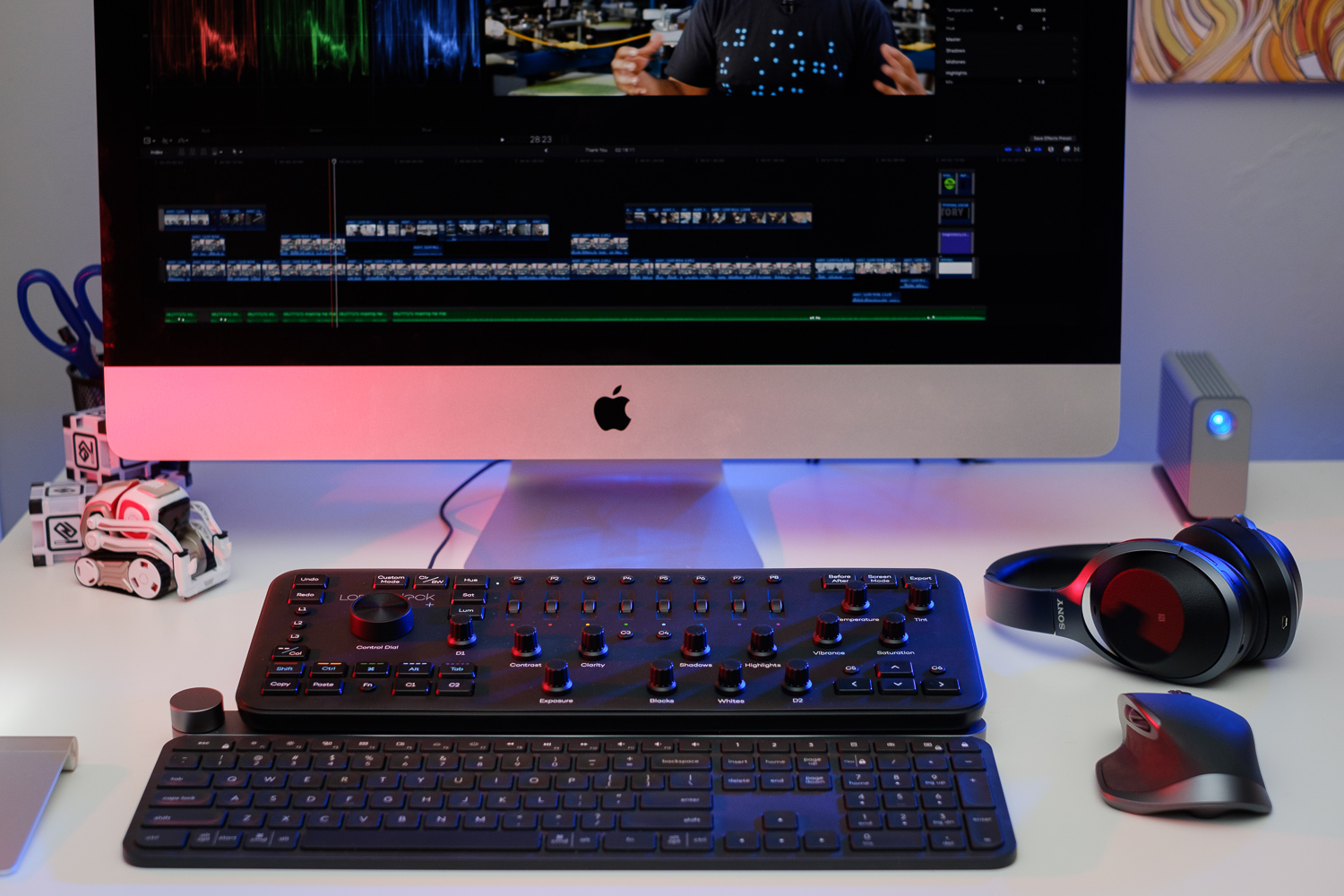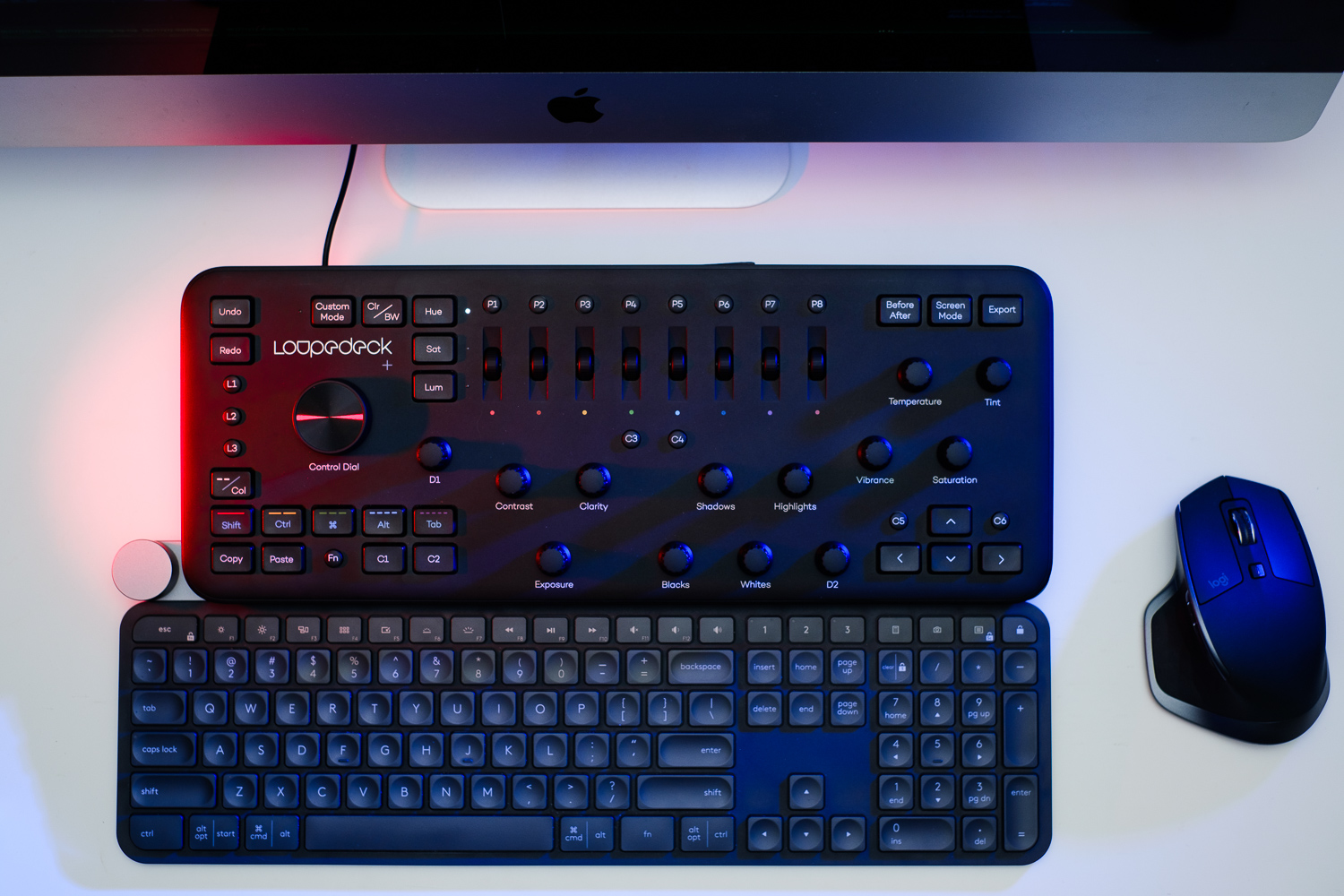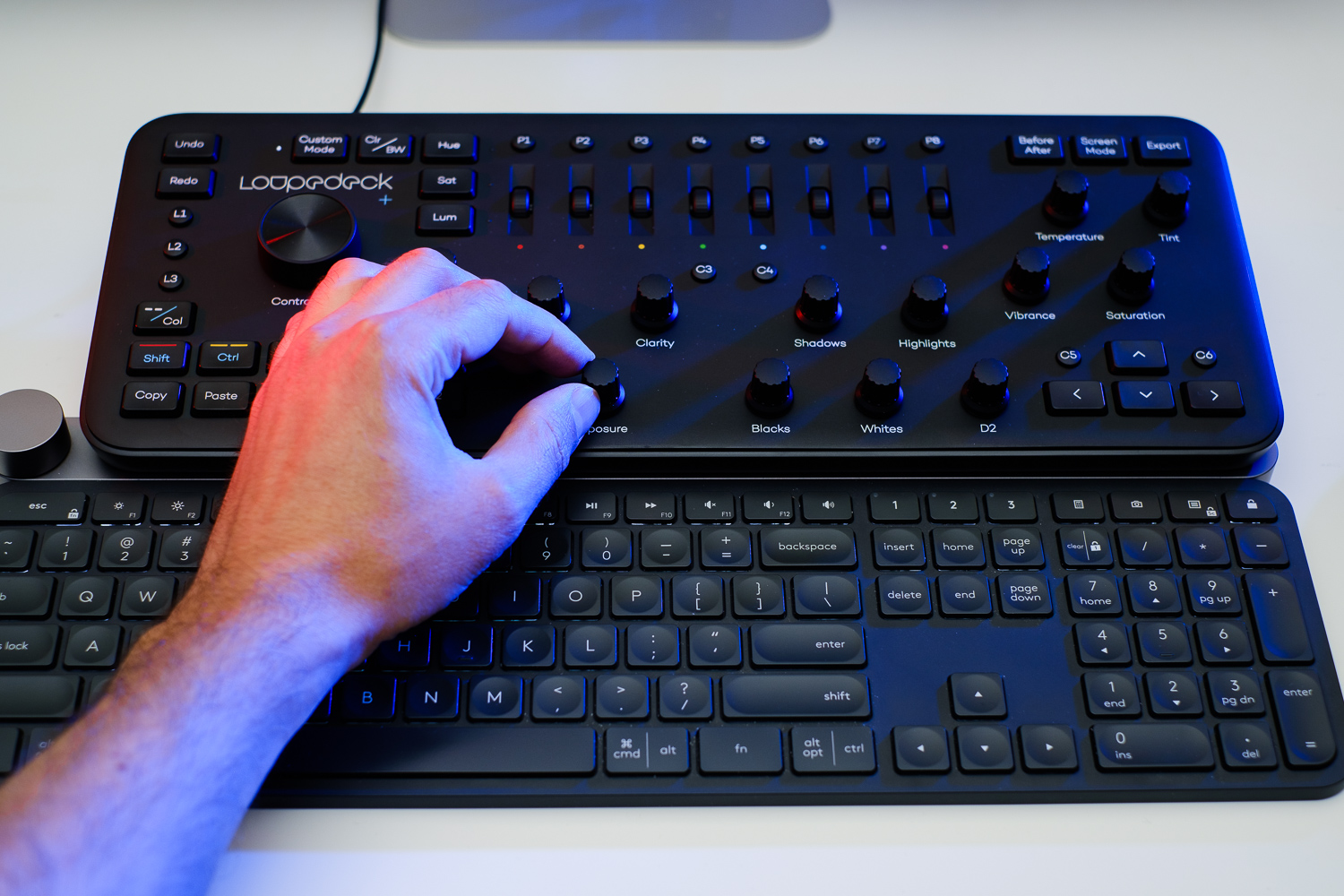If you can’t afford a new Mac Pro, but you’re a serious or aspiring video editor, there is a tool you can buy to speed up workflow on your existing Mac. It’s called the Loupedeck Plus, a $250 custom control interface with buttons, dials, and knobs for performing specific actions faster and more accurately than a mouse and keyboard. While it’s not technically new (nor limited to MacOS), it recently gained support for Apple’s Final Cut Pro X video-editing software.
And it’s awesome. After using it for a couple of weeks, I don’t think I could go back to editing with just a mouse and keyboard.
For experienced editors who already have a command of Final Cut Pro’s keyboard shortcuts, the Loupedeck will introduce a moderate learning curve that will make it feel less efficient at first. But once you adjust to it, you’ll find that navigating the Final Cut Pro interface, making basic edits, and adjusting color are all faster and more accurate.
Perhaps more importantly, it simply makes the entire editing experience more enjoyable.
What is the Loupedeck?
Launched on Indiegogo in 2016, the original Loupedeck surged past its $85,000 fundraising goal in just 48 hours and went on to raise over $400,000 total. At that time, it was billed solely as a photo-editing console for Adobe Lightroom. Loupedeck has since added support for many other programs and refreshed the hardware slightly with the new Loupedeck Plus. Final Cut Pro X is the most recent addition to the list of supported applications. (Note: The original Loupedeck does not support Final Cut Pro.)

Bespoke hardware interfaces have been around for ages, but they haven’t exactly been affordable. Professional film editors and colorists — you know, the type of people who actually will buy the new Mac Pro — have long used setups from companies like Blackmagic Design that cost tens of thousands of dollars. This is why the Loupedeck Plus is so cool; it gives you a downsized version of those pro setups that can fit on your desk at home and doesn’t cost more than your car.
But being designed foremost for Adobe Lightroom, the Loupedeck also lacks some refinement when it comes to using it with Final Cut Pro. First, the buttons and dials are labeled with Lightroom in mind. While some — like Temperature and Tint — perform the same function in Final Cut Pro as they do in Lightroom, others do not. Also, the eight wheels and three keys that control the hue, saturation, and luminance (HSL) panel in Lightroom serve no function at all in Final Cut Pro, and cannot be user-programmed to do anything.
Despite this, I’m rather amazed by how well the Loupedeck interfaces with an application for which it wasn’t originally intended. There are some things that can be improved, and I personally wasn’t satisfied with the default control layout, but after spending a couple hours customizing it to my liking, I am very satisfied with the capabilities of this product. For YouTubers and enthusiast or professional editors without a big studio budget, the Loupedeck is absolutely worth a look.
Scrubbing clean
The Loupedeck offers several ways to navigate the Final Cut Pro timeline. You can jump to the next and previous edit points using the Control Dial — the large main dial on the left of the panel — while the Clarity and D2 dials let you scrub in 1- and 10-frame increments, respectively. Holding the function button reverses the settings of the Clarity and D2 dials, so you can really just ignore one entirely.
Depending on how you edit, you’ll almost certainly want to take some time to remap the controls to match your style (you can see the default layout here). For example, I set the C5 and C6 buttons to select the trailing and leading edges of a clip, respectively, while I programmed the Saturation dial to perform 1-frame nudging, or multiframe nudging when holding the function button. This allowed me to quickly select and trim clips all with the controls located under my right hand, while my left used the Control Dial to navigate between edit points.
Sure, there are keyboard shortcuts for doing this same thing, but they often require pressing multiple buttons simultaneously or are simply not conveniently located. And no button on a keyboard is as fast for scrubbing as rotating a dial.
You can also use buttons on the Loupedeck to quickly move between different windows. Jump to the timeline with P1, the Library with P2, the Viewer with P3, and the Inspector with P4. I reprogrammed the entire row of P keys (eight in total) to show and hide Final Cut Pro’s various browsers and windows, and to toggle video scopes and the color board. Where I previously found myself constantly moving my right hand back and forth between the keyboard and mouse, now I hardly ever reach for the mouse. The few moments this saves here and there add up over time.
A rainbow of possibilities for color
When Apple added back the three-way color wheels to Final Cut Pro X’s suite of color-correction tools, the app gained some much-needed coloring power. The Loupedeck Pus makes using color wheels even more accurate by giving you control over the individual red, green, and blue channels in the highlights, midtones, and shadows.
To enter color-correction mode, press the Custom Mode key on the Loupedeck. This dedicates three dials to each color wheel: The Contrast, Clarity, and Exposure dials control the shadows; Shadows, Highlights, and Whites control the midtones; and Temperature, Tint, and Saturation control the highlights. (Note, again, that the dials’ labels do not correspond to their actual function here.)
Turning a dial moves the selector in the corresponding color wheel along a single color dimension. By using three dials in concert, you have full control over the entire range. You can also press a dial to reset the correction at any time. Additional dials can adjust the brightness of the highlights or darkness of the shadows, or you can hold the function key to make adjustments to the Master color wheel.
I found that by having discrete dials for red, green, and blue, I was more accurate in my adjustments. This also just made me more thoughtful about my choices. Using a mouse to drag a selector around a color wheel may not really be any slower, but it is far less specific. Once you’ve grown comfortable with how the three-dial approach works, I think you’ll really like it.
However, I found the lack of any functionality from the hue, saturation, and luminance wheels to be a real bummer. As it stands right now, there is no way to control the saturation slider for the highlights, shadows, and midtones independently — you can set master saturation, but that’s it. Being able to use the HSL controls could offer a solution to this problem.
To be fair, I’m not sure if this particular issue is simply a limitation within Final Cut Pro itself. But if it is something that Loupedeck can fix, I’d love to see it.
That’s a wrap
I’m ready to call the Loupedeck Plus a no-brainer investment for video editors, but there are some things to consider before buying. The most important thing to know is that it comes with a learning curve. If you plug it in and start using it right away on an editing job with a tight deadline, you will only be frustrated. Take the time to practice with it before you start using it for real work, and know that it may take a few hours to dial in the customization to a point where you’re fully comfortable with the controls.
There are also some limitations of the driver. You can’t just program any button to any control. The dials, for example, all have a button-press function — but there’s no way to customize it, at least not to control anything within Final Cut Pro (the main Control Dial is the one exception here, which has myriad options for programming its button functionality). What’s more, you can’t simply program a Loupedeck key to a key on your keyboard or a keyboard shortcut; you can only select a function from a list of supported ones. There are many to choose from, but being able to assign a custom keystroke would be welcome.
Overall, I’m very satisfied with the Loupedeck Plus. It brings improvements to both speed and accuracy, while also providing a more comfortable, more engaging way to edit video. Even if some of the Lightroom-specific functions and labels don’t transfer to Final Cut Pro, I still think it is priced fairly at $250. This is a great tool for video editors of all skill levels, and I’m pleased to see that its creators have continued to add functionality and support for more applications over time.













